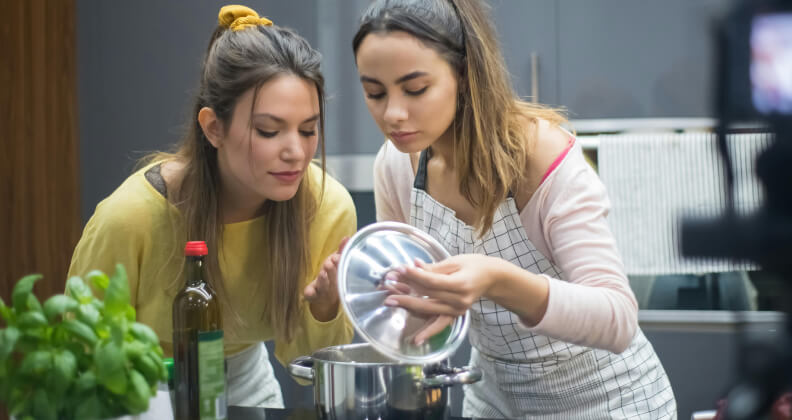Thai food is a global favorite—and for good reason. Its bold flavors, aromatic herbs, spicy pastes, and sweet-savory balance create unforgettable dishes. But here’s something exciting: Thai cuisine, already rich in vegetables and plant-based ingredients, lends itself beautifully to vegan cooking. That’s why vegan Thai cooking classes are taking off like never before, giving plant-based food lovers the chance to dive into a world of flavor without compromising their values.
Whether you’re vegan, plant-curious, or just in love with Thai food, these classes offer a fun, hands-on experience that introduces you to essential techniques, vibrant ingredients, and authentic recipes—with a cruelty-free twist.
Why Thai Cuisine is Perfect for Vegan Cooking
Unlike many other cuisines that rely heavily on dairy, eggs, or meat, Thai cooking already incorporates a lot of naturally vegan elements: coconut milk, tofu, vegetables, rice noodles, herbs like basil and cilantro, and sauces made with fermented or pickled ingredients. The main non-vegan components (such as fish sauce or shrimp paste) can be easily substituted with plant-based alternatives without sacrificing flavor.
That’s why vegan Thai cooking isn’t about restriction—it’s about unlocking a world of creative possibilities using the freshest, most colorful ingredients.
Inside a Vegan Thai Cooking Class
Attending a vegan Thai cooking class is like stepping into a kitchen bursting with color, spice, and energy. Here’s what you can expect:
1. An Introduction to Thai Ingredients
The class usually starts with a tour of essential ingredients—such as galangal, kaffir lime leaves, lemongrass, Thai basil, and bird’s eye chilies. You’ll also explore vegan-friendly staples like
- Coconut milk (used in soups, curries, and desserts)
- Tamarind paste (for sourness)
- Vegan fish sauce (often made with seaweed or soy)
- Palm sugar or coconut sugar (for sweetness)
- Rice noodles, sticky rice, and jasmine rice
Instructors will walk you through how to source or substitute these ingredients if you’re cooking at home.
2. Hands-On Cooking
This is where the magic happens. You’ll prepare dishes step-by-step, learning how to build layers of flavor using traditional techniques like pounding curry paste in a mortar and pestle, balancing sweet-sour-salty-spicy elements, and properly stir-frying with high heat.
Expect a totally immersive, aromatic experience!
3. Cooking in Harmony with Nature
Many classes emphasize mindfulness and sustainability, highlighting the environmental benefits of plant-based cooking. Some even take place in eco-kitchens or organic farms where ingredients are harvested on-site. It’s about more than cooking—it’s about connection to the food you eat.
Popular Vegan Thai Recipes You’ll Learn
Here are some of the most loved dishes typically featured in vegan Thai cooking classes:
🍛 Vegan Green Curry (Gaeng Keow Wan)
Made with homemade green curry paste, coconut milk, tofu, Thai eggplant, bamboo shoots, and fresh herbs. This dish is spicy, creamy, and packed with flavor.
🍜 Pad Thai with Tofu
One of Thailand’s most famous exports, Pad Thai is easily made vegan by using tamarind sauce, tofu, and vegetables like bean sprouts and carrots. No eggs or fish sauce needed—just a splash of vegan fish sauce or tamari.
🍲 Tom Kha Soup
A rich, coconut-based soup flavored with galangal, lemongrass, and lime leaves. Often made with mushrooms and tofu, this comforting dish is both fragrant and refreshing.
🌶️ Som Tum (Green Papaya Salad)
Zesty, crunchy, and spicy, this raw salad uses shredded green papaya, cherry tomatoes, green beans, and peanuts in a lime-chili dressing. A vegan version swaps out dried shrimp and fish sauce for tamari or soy-based alternatives.
🍚 Sticky Rice with Mango (Khao Niew Mamuang)
This dessert is a fan favorite. Sweet coconut-infused sticky rice paired with juicy, ripe mango—naturally vegan and totally addictive.
🥬 Stir-Fried Morning Glory (Pad Pak Boong)
A simple yet flavorful dish of stir-fried water spinach with garlic, chili, and fermented soy sauce. Quick, healthy, and delicious.
Why These Classes Are So Popular
Vegan Thai cooking classes are trending for a few key reasons:
- Flavorful Learning: Thai food is exciting and dynamic, perfect for people who want to eat healthy and enjoy bold flavors.
- Cultural Experience: Many classes include cultural insights into Thai traditions, markets, and cooking customs, making it more than just a recipe tutorial.
- Inclusive & Accessible: Vegan cooking classes welcome everyone—vegans, vegetarians, foodies, and people with food sensitivities.
- Online and In-Person Options: You can find vegan Thai classes in big cities, cooking schools, or even online via Zoom, giving you flexibility no matter where you are.
Who Should Try a Vegan Thai Cooking Class?
- Home Cooks Looking to Level Up: You’ll learn authentic techniques and flavor balancing that will elevate all your meals.
- Vegans and Vegetarians: Discover new favorite meals that align with your lifestyle.
- Culinary Explorers: If you love to travel through food, these classes are a great way to immerse yourself in Thai culture.
- Health-Conscious Eaters: Thai vegan dishes are often low in processed ingredients and full of anti-inflammatory herbs and veggies.
Final Thoughts—A Flavorful Journey Without Compromise
Vegan Thai cooking classes are more than just cooking lessons—they’re immersive, sensory-rich journeys into one of the world’s most beloved cuisines. You’ll come away with valuable culinary skills, a deeper appreciation for Thai culture, and a collection of mouthwatering recipes to add to your weekly rotation.
So whether you’re craving a steaming bowl of coconut soup or dreaming of mango sticky rice, there’s no better way to learn than hands-on. Grab your apron, clear your counter, and let the spices fly—because your next favorite meal might just come from a Thai vegan cooking class.



 Upskill Bridge
Upskill Bridge 



